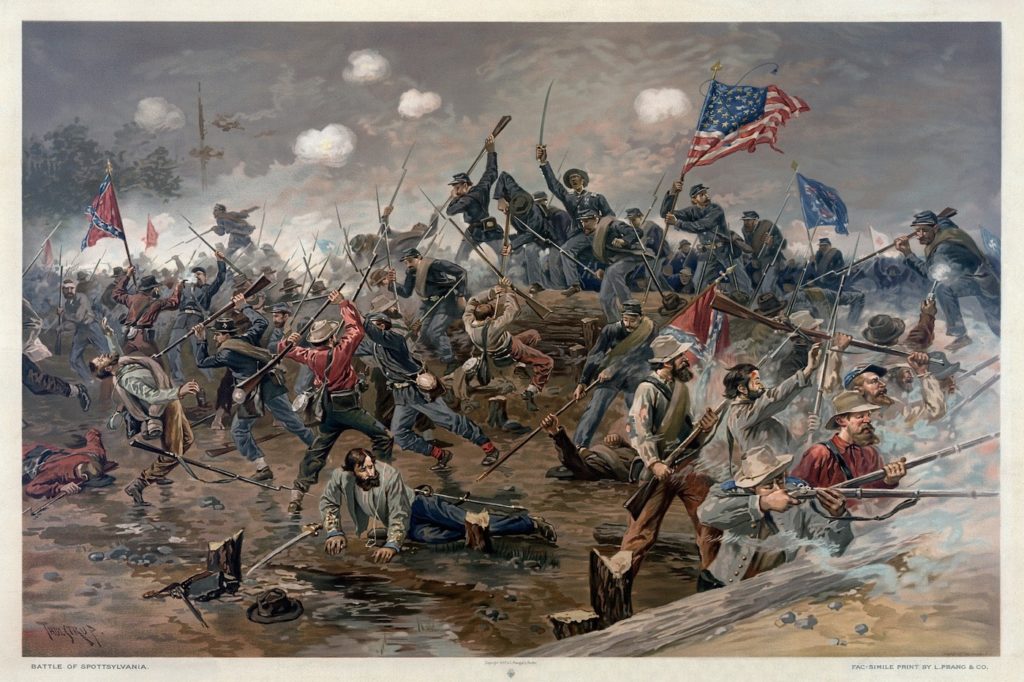That the Civil War wrought tremendous changes in American constitutional law has never been in doubt. The three Reconstruction amendments alone, which were the first amendments to the Constitution since 1804, shifted the balance of constitutional restriction from the federal government (where it had rested since 1789) to the state governments. But how deeply did these innovations re-shape the Constitution—or were they, in fact, innovations at all? What the Thirteenth Amendment accomplished in abolishing slavery was something members of the Constitutional Convention in 1787 thought inevitable; the description of citizenship and its rights in the Fourteenth and Fifteenth Amendments clarified a definition the 1787 Convention had unintentionally left murky.
And yet, a persistent argument has emerged, beginning with Bruce Ackerman and George Fletcher in the 1990s, that “the three Reconstruction Amendments enacted a second American constitution . . . based on values fundamentally different from those that went before,” as Fletcher put it. This argument is a godsend for those impatient with American constitutionalism, especially since it seems to bring with it the imprimatur of Abraham Lincoln. Ironically, this argument has also been a gift for anti-Lincolnites, from Clement Vallandigham in 1863 to Thomas J. DiLorenzo in 2020, and sensationalist neo-Confederates who enjoy accusing Abraham Lincoln of overthrowing the Constitution and replacing it with an executive dictatorship.
Noah Feldman’s 2021 The Broken Constitution: Lincoln, Slavery, and the Refounding of America (Farrar, Straus & Giroux) could be set down as merely another voice to be added to the “re-Founding” argument. To a certain extent, that is true. But Feldman’s view of Lincoln is more sophisticated and more revealing than first glances might suggest. For Lincoln does not stride forth in Feldman’s account like Sir Artegal’s iron-man Talus with his flail, boldly refashioning the Constitution to suit a new and future age. If there is constitutional refashioning to be done, Lincoln will do it kicking and screaming in resistance.
Constitution of Compromise
Start your day with Public Discourse
Sign up and get our daily essays sent straight to your inbox.Feldman’s story begins not with Lincoln, but the Constitution itself. The Constitutional Convention might well have believed in 1787 that slavery was on its way to the dustbin of history. But obviously slavery did not go so gently into a legal good-night. It not only became a major component of the American export trade, but it generated a voracious demand for westward expansion in order to turn more and more land into cotton plantations.
The Constitution—and the Union it created—became a great engine of compromise. No matter how critical many Americans became of slavery, few were willing to endanger either the Constitution or the Union by antagonizing the slaveholding states. The American nation was so fissiparous, wrote William Findley in 1796,“being collected from various nations,” that it would not be able to sustain its remarkable republican experiment without compromise. Hence, at every moment when demands to legalize slavery in the west were met with fury from non-slaveholders, the result was a compromise that calmed anti-slavery suspicion—but still left slavery legally intact.
The Constitution—and the Union it created—became a great engine of compromise. No matter how critical many Americans became of slavery, few were willing to endanger either the Constitution or the Union by antagonizing the slaveholding states.
Lincoln’s Searches for Compromise
For a good part of his political life, Lincoln was content to serve that compromise. Whatever his personal aversion to slavery in the years before the war, it never rose to a level that might cause him to rock the compromise boat. Even after the pro-slavery aggression of the Kansas-Nebraska Act in 1854 galvanized him into unqualified opposition to slavery, that opposition resolved itself into a demand for the restoration of compromise. It was not until Dred Scott that Feldman finds Lincoln beginning to lose hope in the compromise Constitution, and not until the “House Divided” speech of June 16, 1858, that Lincoln begins to warn that compromise was exhausted as a strategy for Constitution-saving and Union-saving, and “that the union would have to become all slave or all free.”
And yet, Lincoln was still not prepared to jettison compromise entirely. In his first Inaugural Address as president, he tried to salvage compromise by offering to enforce the Fugitive Slave Law and endorse a constitutional amendment to grant permanent protection to slavery in the states where it was legal. The secession of the slave states, and the attack on federal property at Ft. Sumter, replaced compromise with civil war, but only gradually, since Feldman sees Lincoln spending much of the first year of the war trying to “make some concessions in relation to the preservation of slavery.” But the offers failed, and by 1862 Lincoln confronted the reality that the old compromise Constitution was broken beyond repair. The continuation of civil war could only be justified by reconceiving the Constitution as “a new kind of moral document whose legitimacy rested . . . on the moral truth of human equality,” according to Feldman.
This, in turn, gave Lincoln “considerable latitude with respect to how he should interpret the Constitution while at war,” a latitude that licensed him to suspend the writ of habeas corpus, imprison dissenters, and eventually emancipate slaves. In fact, argues Feldman, from the day the Emancipation Proclamation took effect, “the compromise Constitution would be officially and permanently dead.” It is this new “moral” Constitution that leads ineluctably to the Reconstruction amendments, and from there to Brown v. Board of Education, to Martin Luther King, and to Obergefell v. Hodges. The moral imperative of equality is now “our national project,” and Feldman believes that we should find its triumph over the compromise Constitution as the real substance of “Lincoln’s legacy.”
Unity Above All
Feldman’s commentary on Lincoln is shrewd, well-read, and forcefully argued. The great difficulty is that so little of it proceeds from Lincoln himself. For Lincoln to be the hinge of a shift from a compromise Constitution to a moral one, he would need to have abandoned compromise as a political goal. Yet compromise was woven into the fabric of Lincoln’s Whig politics, as well as into his own practice as a lawyer. (“Discourage litigation” was his advice to lawyers in 1850. And: “Persuade your neighbors to compromise whenever you can.”)
As utterly unwilling as he was to surrender the Emancipation Proclamation (“I should be damned in time & in eternity for so doing,” he told a visitor in 1864), he was nevertheless offering compromises to the Confederacy as late as the Hampton Roads Conference in 1865 if “all resistance to national authority shall be abandoned and cease.” Long past the issuance of the Proclamation, Lincoln continued to insist to old friends that “the consideration that has been paramount to all others, is the restoration of the Union, and the unity and security of the Republic,” and “all others will be of comparative secondary importance.”
Which Morality?
There is a different problem in Feldman’s use of the term moral as the goal of a new Constitution: he never actually defines what he means by morality. Lincoln thought he knew, and the morality he believed marched in opposition to slavery was the classical natural-law morality of the nineteenth-century moral philosophers and the eighteenth-century Enlightenment. But that was a morality he saw captured in the Declaration of Independence, and which constituted an aspiration of the American republic from the start. In other words, Lincoln already believed in the 1850s that the natural rights of the Declaration infused the Constitution. The slaveholders’ plot was to empty the Constitution of that meaning and swing the course of the Republic to their own amoral heading. He saw his task, as he said in 1858, as turning “this Government back into the channel in which the framers of the Constitution originally placed it.”
Lincoln already believed in the 1850s that the natural rights of the Declaration infused the Constitution. The slaveholders’ plot was to empty the Constitution of that meaning and swing the course of the Republic to their own amoral heading.
But there is a second problem posed by Feldman’s account of the new moral Constitution: what happens to the old one defined by compromise? “If liberty and equality were true and universal goals for the nation,” Feldman reasons, “then . . . the Constitution would have to be replaced by something different,” which Feldman claims is exactly what Lincoln did. But if this is true, then Lincoln has little to offer as “something different.” He rebuked his Treasury Secretary, Salmon Chase, in 1863 for suggesting that he unilaterally broaden the Emancipation Proclamation to include the border states as well as the rebel Confederacy. Lincoln replied that he had no authority to broaden it simply because he thought “the measure politically expedient, and morally right.” To do that would “give up all footing upon constitution or law” and land him “in the boundless field of absolutism.”
This, to say the least, does not suggest that Lincoln regarded the Constitution as “broken” or discardable. If it was, then it would be worth asking why Lincoln bothered to permit any dissenters to remain unarrested, why he bothered to tolerate a potentially term-ending presidential election in 1864, or why he even needed an abolition amendment when an executive order could have as easily done the job.
But perhaps the strongest argument against Feldman’s claim that Lincoln confected a replacement Constitution is that there is so little evidence for it in the half-century after the Civil War. Feldman struggles to explain this lack of evidence as a reversion, during Reconstruction, to the old pattern of compromises, with “white Northerners . . . once again, compromising with white Southerners over the subjugation of African Americans.” But the more obvious explanation is that the compromise Constitution simply never went away in the first place, and that the moralized Constitution Feldman describes had to wait until well into the twentieth century to take shape in the minds of American jurists. Whether the moral connotations it acquired then are the same as those discerned by Abraham Lincoln in the cauldron of nineteenth-century crisis and war is the question that remains tantalizingly unanswered.













